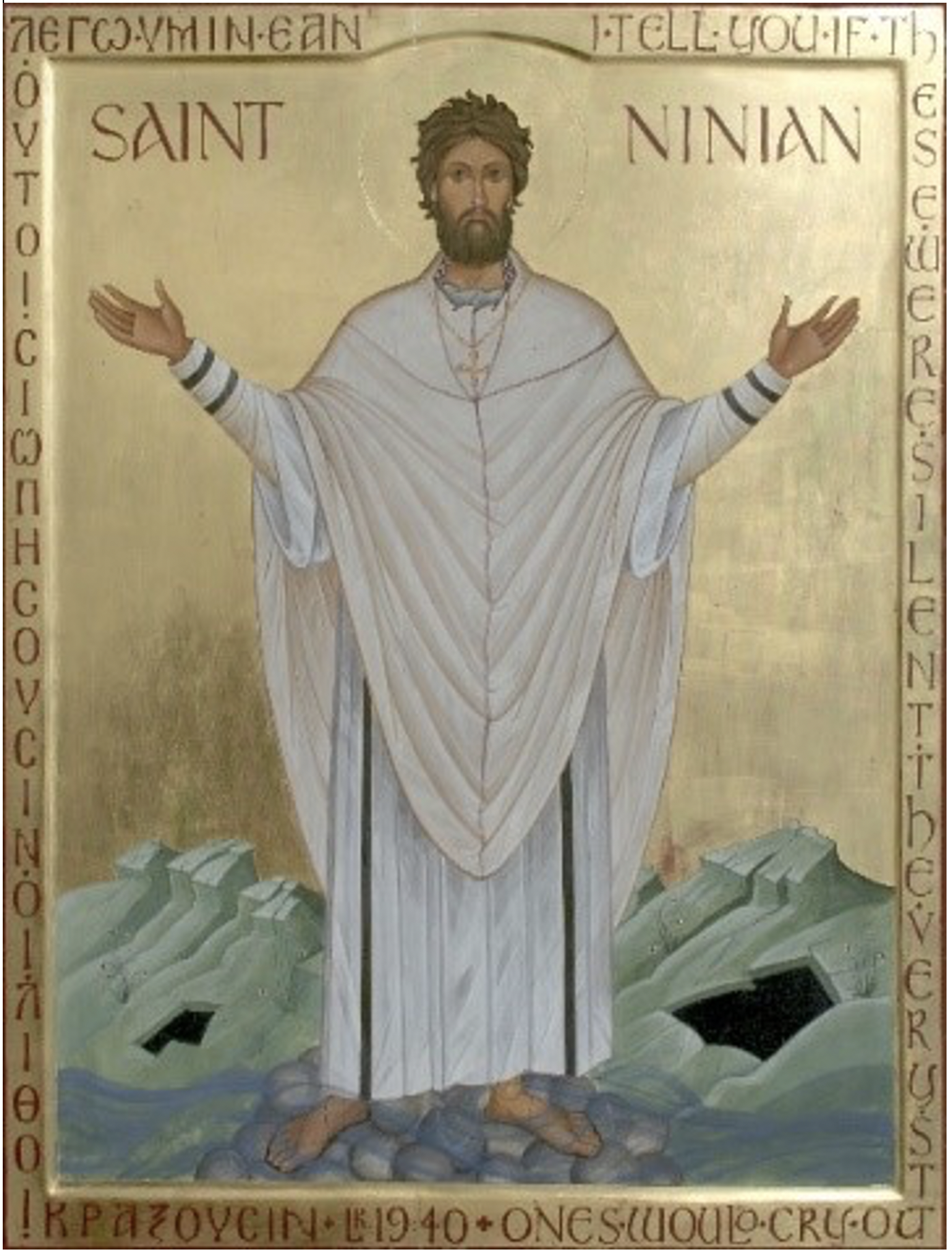St Ninian
An early mention of St Ninian appears in the famous book by Bede called Ecclesiastical History of the English People. In it he records that in the year 565 St Columba travelled from Ireland to Scotland, to the land of the Picts, in order to preach the Gospel. He also notes that the northern Picts and southern Picts were separated by the Grampian mountains, and that the southern Picts had already been brought to the Faith by the preaching of St Ninian. He described Ninian as
“a most reverend and holy man of British race, who had been regularly instructed in the mysteries of the Christian Faith in Rome.” [1]
It is also from Bede that we hear of the church Ninian had built from stone, called Candida Casa, the White (or shining) House, hence Whithorn.
Much later, in the twelfth century St Aelred, who was a monk in the Cistercian Order, at Rievaulx, in Yorkshire, wrote the Life of St Ninian. In this work he shows Ninian to be a man who could be seen as being in the image of Christ (imitatio Christi). At this stage it is worth making the point that the style of writing which was used in depicting the lives of the saints was known as hagiography. This really just means ‘writing about holy people’. However, the important thing to remember when considering this form of writing is that it is not completely objective; that is to say, it aims to show the person always in a good light.
The historian Marsha Dutton has said that Aelred saw St Ninian as a person who expressed in the one person both the contemplative and active ways of living the Christian life [2]. The ‘contemplative’ would mean the person given over to prayer and reflection. The ‘active’ would be the person engaged in doing good works. For a long time these two ways of presenting the Christian life have been viewed as completely separate from each other; however, these days a few people are starting to talk about both aspects being found in the same person. St Aelred was already doing that in the twelfth century. Aelred presents Ninian as a man who was prayerful, was a missionary, built a church building, and built up the Church community. [3]
[1] Bede, Ecclesiastical History of the English People (London: Penguin Books, 1990), Bk 3, Ch. 4, p.148
[2] Marsha Dutton, ‘A Mirror for Christian England’, in Aelred of Rievaulx: The Lives of the Northern Saints (Kalamazoo: Cistercian Publications, 2006), pp. 1-32
[3] Ibid

Let St Ninian be our continuing example too. May Our Lady, St Ninian, and all the saints pray for us.
Icon artwork by permission of Aidan Hart Icons https://www.aidanharticons.com
Text from ‘We are Cuthbert, We are Ninian’ written by Fr. Gerard Bogan (Former parish priest of St. Ninian’s and St. Cuthbert’s Parish)


